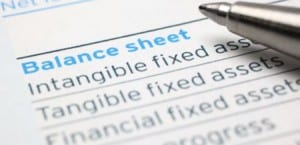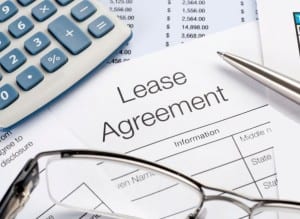In today’s rapidly-growing material handling industry, forklifts have become as important a feature as the inventory itself- transporting mass quantities of goods with greater ease and precision than ever before. Even in the capable hands of skilled workers, there are just some tasks beyond that of human strength and endurance, so machinery is a necessity in order to keep pace. But after years of doing the heavy lifting, your equipment will start to show its age, and eventually, will need to be upgraded.
Should you consider leasing instead of buying new equipment? Any industry can benefit  from leasing, but whether it is optimal for you depends largely on how your company wants to record the cost, either by using the asset and expensing it monthly (leasing) or taking title and depreciating it (buying).
from leasing, but whether it is optimal for you depends largely on how your company wants to record the cost, either by using the asset and expensing it monthly (leasing) or taking title and depreciating it (buying).
If your forklifts are starting to show the tell-tale signs of wear and tear, upgrading sooner than later will save you time and money and prevent equipment failure from sidelining your business. If the need is there but you want to avoid an upfront capital outlay, there are great alternatives.
Flexible Financing for Forklifts
 Financing your forklifts and other material handling equipment lets you upgrade right away, and gives you the flexibility to pay for your new tools over time in manageable monthly installments. By leasing, you can customize your payment plan – accelerated payments, skip or defer payments, make seasonal payments, or standard monthly payments – and in most cases, receive 100% financing at today’s low interest rates.
Financing your forklifts and other material handling equipment lets you upgrade right away, and gives you the flexibility to pay for your new tools over time in manageable monthly installments. By leasing, you can customize your payment plan – accelerated payments, skip or defer payments, make seasonal payments, or standard monthly payments – and in most cases, receive 100% financing at today’s low interest rates.
There are different types of leases available, and we can help you find one that best serves your needs. With fair market value leases, you can either return the equipment, or at the end of the lease, purchase the equipment for fair market value.
Renting vs Leasing Forklifts
Now if you’re wondering about the difference between renting and leasing a fork truck, let me walk you through the major differences. If you need equipment for only a short period of time, such as a special project, seasonal needs, or unexpected surges in shipping requirements, then renting is probably your best option. Renting is more expensive per month than leasing, but will cost you less over the course of a year if you don’t need the equipment full time. If you do, leasing is the economical way to go if you prefer not to buy.
Did you know you can lease more than just standard vehicles for your material handling needs? Types of equipment that you can lease include:
- Forklifts, both new and reconditioned
- Tennant Sweeper and Scrubbers
- Batteries and Chargers
- Pallet Racking
- Conveyor Systems
- Automated Storage and Retrieval Equipment
Benefits of Leasing Material Handling Equipment
Most people consider leasing for one of three reasons:
1. Avoiding Obsolescence: maintain a level of superior machinery. By leasing your material handling equipment, you will keep your options open and never get stuck with outdated equipment.
2. Eradicate Downtime: when machines are older, they tend to fall into disrepair more often. By leasing your equipment, you not only mitigate the risk of machine failure, but also avoid the higher downtime associated with old equipment.
3. Get Out of the Repair Business: When you lease, you can also secure full contract maintenance and have the cost added to your lease cost. It’s simple, easy and lets you focus on your business.
If you need advice on options available, we’d be glad to help you make the right choice for your operation. If you already know what you need, we can help you get the ball rolling to lease or purchase your new material handling equipment.
What are some of the signs you look for to determine when it’s time to upgrade your equipment? Leave a comment below.



Leave a Reply
You must be logged in to post a comment.